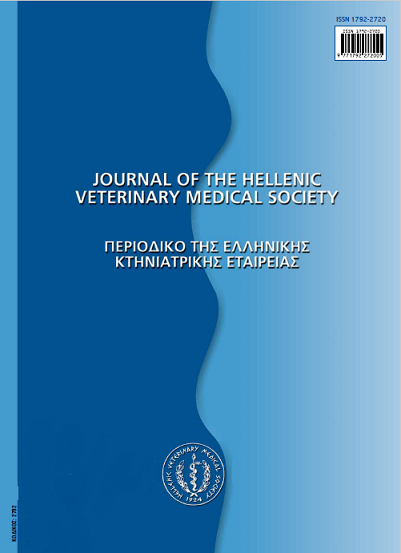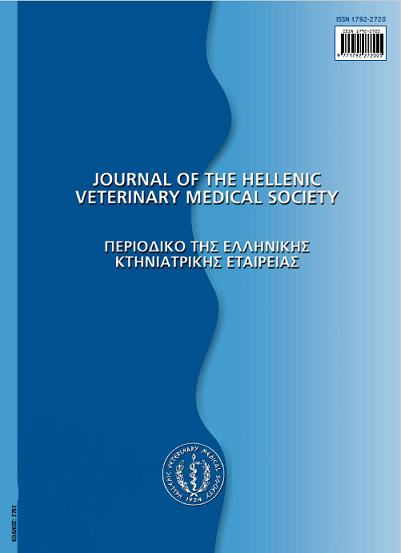The history of development of medicine through time: a repeated case
Résumé
At all times, man was interested in the therapy of diseases in any possible way. In the Hellenic world, that is generally regarded as the spiritual predecessor of recent Europe, two distinct traditions existed: the first had a true sacred origin and was practiced from a corporation or guild of healers/priests named zsAsklipiades. Asklipios, son of Apollo, was considered by them as their generic leader. The second, practiced by Vakhes, comes from indigenous populations of Eastern Aegean area approx. at 2000 B.C. During its practice patients went into a sacred mania ie., with dancing, music, or body exertion went into an extended consciousness from which, when they recovered, they showed a peaceful state and a new identity again due to moral comprehension. The first liberation from sacred ceremonies occurs in ancient Greece from Hippocrates and thus the first step towards scientific medicine occurs and it is practiced by cosmic healers. To Hippokrates we owe the meaning of "method" for the observation and development of the disease and its symptoms (there is a distinction between them). He believed in "the self healing capability of nature" that had to be taken into account, because medicine comes from the disruption of the balance between man and environment. After Hippocrates there is a gap of approx. 7 eons (till 3rd century D.C.) during which period important developments occur that will determine later the path of medicine: 1. During the 1st century B.C., Dioscouridis from Alexandria and in the 2ndcentury D.C. Asklipiadis and the great healer and surgeon from Pergamos, Galinos, transplanted the "absolute medical orthodoxy" in Rome where it remained as a dogma until the 16th century D.C. This is similar to Arab and recent European medicine. Hippocrates and Galinos beliefs have a lot in common with the growth of medicine in China and India. 2.Arab philosophers and healers reconnect medicine with politics and their base is the healthy society. 3. In Christianity, in the Middle Ages, the human body is discarded as not * worthy and surgery and anatomy are prohibited. In 1130 D.C. the practice of medicine by monks isprohibited and this is passed on to "cosmic clergy" from where the first schools of medicine and recent Universities originate (Paris, Oxford, Bologna, Montpellier). With Renaissance starts the questioning of the Galino's theory. The main archetype of the healer of this period was undoubtedly Paracelsus. He brings back the correlations of symptoms and moral attitude and his whole comprehension was "ecosystematic" and "psychosomatic". The healing ideas and practices of the Middle Ages and Eastern world are various and come from different origins without being an identical philosophical model, but they have the following similar points changed eventually by the "scientific medicine" born after the Cartesian debate: a) there is a bond between body and psyche, b) there is a bond of interaction between the human body and the environment, c) there is a mutual bond of equality and trust between the patient and the healer. The important developments between the 17th - 18th centuries (discovery of the microscope, growth of laboratories and clinics) will give a tremendous push to this scientific medicine and will allow to discard the patient as a whole person for the favour of the diagnosis and the manipulation of "diseases and syndromes". Another disruption from this course of scientific medicine occurs with the emergence of biology as a distinct science, which brought the uprising of the usual vitalistic beliefs that during in the 18th century did not totally stop to exist (G. Stahl-anima, S. Hahneman- homeopathy). However, due to the positivistic direction that the great physiologist of the 19th century, C. Bernard (who established in medicine the quantification according to the prototype of positive Sciences) and finally L. Pasteur established with the discovery of the bacterial role, strengthened again the self confidence of the classical/ scientific medicine. In 20th century, medicine gains also powers and is connected socially also with the growing pharmaceutical, but still is unable to heal satisfactory the mental / psychological illnesses; meantime, the recent specialization opened up a new horizon of medical applications (molecular biology, neurochemistry, clear understanding of the immunological-nervous-endocrinological mechanism) that are, however, part of the same mechanical model. The malpractice of this model involved attachment of medicine and politics in a programme that experimentally was performed in the Nazis camps. Again, three subsequent currents of developments questioned the medical orthodox theory during most of 20th century: S. Freud and psychoanalysis, the phenomenological medicine of E. Husserl and modern alternative medicines (homeopathy, acupuncture).
Article Details
- Comment citer
-
ATHANASSOPOULOU (Φ. ΑΘΑΝΑΣΟΠΟΥΛΟΥ) F. (2017). The history of development of medicine through time: a repeated case. Journal of the Hellenic Veterinary Medical Society, 60(2), 125–133. https://doi.org/10.12681/jhvms.14921
- Numéro
- Vol. 60 No 2 (2009)
- Rubrique
- Special Article
Authors who publish with this journal agree to the following terms:
· Authors retain copyright and grant the journal right of first publication with the work simultaneously licensed under a Creative Commons Attribution Non-Commercial License that allows others to share the work with an acknowledgement of the work's authorship and initial publication in this journal.
· Authors are able to enter into separate, additional contractual arrangements for the non-exclusive distribution of the journal's published version of the work (e.g. post it to an institutional repository or publish it in a book), with an acknowledgement of its initial publication in this journal.
· Authors are permitted and encouraged to post their work online (preferably in institutional repositories or on their website) prior to and during the submission process, as it can lead to productive exchanges, as well as earlier and greater citation of published work.










